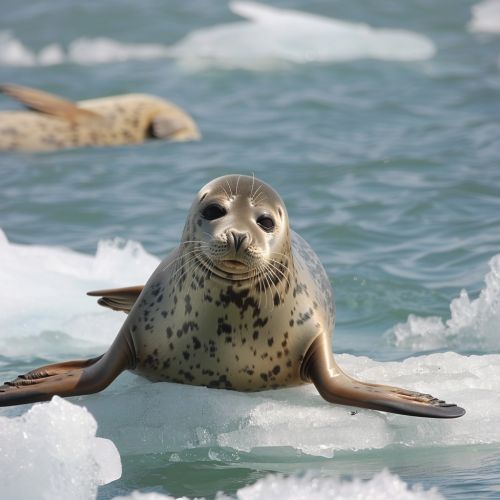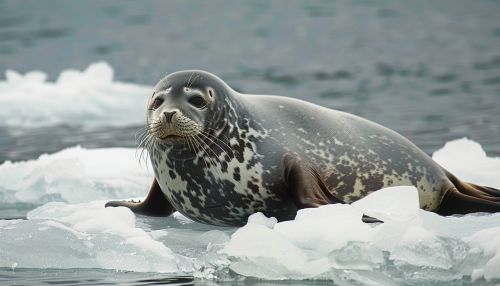Seals
Introduction
Seals are a diverse group of semi-aquatic mammals in the Pinniped family. They are characterized by their sleek, streamlined bodies, which are well-adapted for swimming and diving in the ocean. Seals are found in all the world's oceans, from the frigid Arctic and Antarctic regions to tropical waters.


Classification and Evolution
Seals are divided into three families: the Phocidae (true seals or earless seals), the Otariidae (eared seals, which include sea lions and fur seals), and the Odobenidae (the walrus). These families share a common ancestor from the Caniformia suborder, which also includes bears and weasels.
Anatomy and Physiology
Seals have a number of physical adaptations that allow them to thrive in aquatic environments. Their bodies are streamlined for efficient swimming, with a layer of blubber for insulation against cold water. Their flippers are used for propulsion in the water, while on land, seals move in a series of undulating, caterpillar-like movements.
Diet and Hunting Behavior
Seals are carnivorous, feeding primarily on fish and invertebrates. Some species, like the leopard seal, also consume other seals. Seals have developed various hunting strategies, from ambush predation to cooperative hunting.
Reproduction and Life Cycle
Seal reproduction is characterized by a delayed implantation of the fertilized egg, which allows the female to time the birth of her pup to coincide with favorable environmental conditions. The life cycle of a seal, from birth to adulthood, involves several stages and varies among species.
Conservation Status
Many seal species are threatened by human activities such as hunting, habitat destruction, and pollution. Conservation efforts are in place to protect these species and their habitats.
